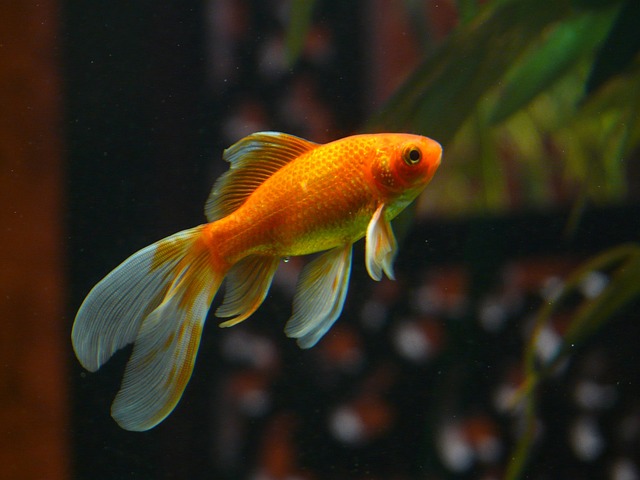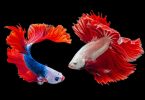Table of Contents
Do goldfish get lonely? As a goldfish owner, you may have wondered about this question. Goldfish are often seen as low-maintenance pets that don’t require much attention or interaction. However, recent studies suggest that goldfish may be more complex creatures than we previously thought.
Goldfish are social animals that naturally live in groups. In the wild, they form schools and interact with each other in various ways. They communicate through body language, vocalizations, and even chemical signals.
However, in captivity, goldfish are often kept alone in small bowls or tanks, which can lead to boredom and stress.
So, do goldfish get lonely? The answer is yes. Goldfish can experience loneliness and may even become depressed if they don’t have enough stimulation and social interaction.
Goldfish Social Behavior
Goldfish are social creatures that enjoy the company of other fish. They display a range of social behaviors, including shoaling, foraging, and mating.
In this section, we’ll explore goldfish social behavior and answer some common questions about their need for company.
How Do Goldfish Behave in the Wild?
In the wild, goldfish live in large shoals and spend most of their time foraging for food. They are active during the day and rest at night.
Goldfish are social animals that form close bonds with other fish in their shoal. They communicate with each other using visual signals, such as body posture and color changes, and chemical signals, such as pheromones.
Do Goldfish Need Company?
Goldfish are social animals that thrive in the company of other fish. They are happiest when they have other fish to swim with, and they can become stressed and lonely if they are kept alone for extended periods. In fact, research has shown that goldfish that are kept alone can become depressed and lethargic.
What Happens When Goldfish Are Alone?
When goldfish are kept alone, they can become stressed and bored. They may spend more time hiding or resting and less time swimming and exploring their environment.
Goldfish that are kept alone may also become more aggressive towards other fish if they are introduced to a tank later on.
If you are unable to provide your goldfish with company, you should consider providing them with plenty of toys and hiding places to keep them entertained.
In conclusion, goldfish are social creatures that enjoy the company of other fish. They display a range of social behaviors, including shoaling, foraging, and mating.
Goldfish that are kept alone can become stressed and lonely, so it’s important to provide them with company or plenty of toys and hiding places to keep them entertained.
Creating a Healthy Environment for Your Goldfish
As a responsible goldfish owner, it’s important to provide your fish with a healthy and comfortable living environment. Here are some things to consider when setting up your goldfish tank.
How Much Space Do Goldfish Need?
Goldfish are active swimmers and require plenty of space to swim around. A good rule of thumb is to provide at least 20 gallons of water per goldfish. This means that if you have two goldfish, you’ll need a tank that holds at least 40 gallons of water.
Keep in mind that some goldfish species can grow quite large, so make sure your tank is big enough to accommodate their size.
What Kind of Tank Mates Are Suitable for Goldfish?
Goldfish are social creatures and can benefit from having tank mates. However, not all fish are suitable companions for goldfish.
Avoid keeping goldfish with tropical fish, as they have different temperature and water quality requirements.
Instead, consider keeping goldfish with other coldwater species such as minnows, guppies, or white cloud mountain minnows.
What Are Some Signs of Stress in Goldfish?
Goldfish can experience stress if their living conditions are not optimal. Some signs of stress in goldfish include:
- Lethargy
- Loss of appetite
- Gasping at the water surface
- Fins clamped against the body
- Red streaks on the fins or body
- White spots on the fins or body
If you notice any of these signs, it’s important to take action to improve your goldfish’s living conditions. This may include performing a water change, adjusting the temperature or pH of the water, or providing more hiding places in the tank.
By following these guidelines, you can create a healthy and comfortable environment for your goldfish to thrive in.
How to Keep Your Goldfish Happy and Healthy
Goldfish are social creatures that thrive in environments that mimic their natural habitat. As a responsible pet owner, it is important to ensure that your goldfish is happy and healthy. Here are some tips on how to keep your goldfish happy and healthy.
Feeding Your Goldfish
Goldfish are omnivores, which means they eat both plants and animals. A balanced diet is essential for their health and longevity. You should feed your goldfish a variety of foods, including:
- Flakes or pellets specifically formulated for goldfish
- Fresh or frozen vegetables, such as peas, spinach, and zucchini
- Live or frozen foods, such as brine shrimp, bloodworms, and daphnia
It is important not to overfeed your goldfish, as this can lead to health problems. A good rule of thumb is to feed your goldfish a small amount of food once or twice a day, and only give them as much as they can eat in a few minutes.
Providing Enrichment for Your Goldfish
Goldfish are intelligent creatures that need mental stimulation to thrive. You can provide enrichment for your goldfish by:
- Adding plants to their tank
- Providing hiding places, such as caves or tunnels
- Introducing new objects to their tank, such as toys or decorations
- Varying the lighting in their tank
By providing enrichment for your goldfish, you can help prevent boredom and promote their overall health and well-being.
Maintaining a Clean and Healthy Tank
A clean and healthy tank is essential for your goldfish’s health. You should clean your goldfish’s tank regularly by:
- Removing any uneaten food or debris
- Performing partial water changes on a regular basis
- Testing the water regularly to ensure that the pH, ammonia, and nitrite levels are within safe ranges
You should also ensure that your goldfish’s tank is the appropriate size for their needs. A good rule of thumb is to provide at least 20 gallons of water per goldfish.
In conclusion, by following these tips, you can help ensure that your goldfish is happy and healthy. Remember to provide a balanced diet, enrichment, and a clean and healthy tank for your goldfish to thrive.







